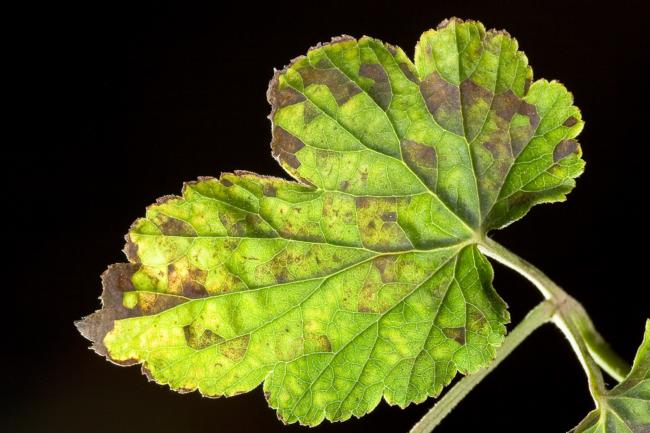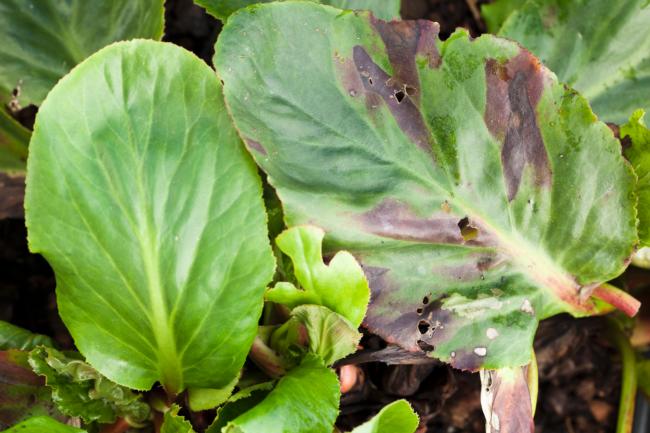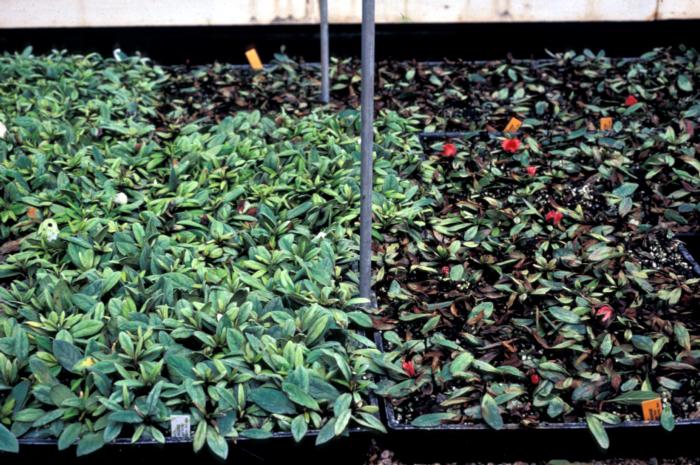Spring 2011 Field Observations
Root pathogens and foliar nematodes
by Steve Tjosvold
A very wet late-winter and spring has predictably led to numerous diseases that are favored by wet weather. The root pathogens, Pythium and Rhizoctonia, have been detected on multiple nursery stock hosts at the propagation stage or recently transplanted. A review of the prevention and management of these diseases at the UC IPM website should be useful (http://www.ipm.ucdavis.edu/PMG/r280100211.html and http://www.ipm.ucdavis.edu/PMG/r280100111.html).
Of particular interest, has been the detection of foliar nematode on nursery stock. Foliar nematode (Aphelenchoides spp.) damage can be confused with damage caused by other foliar pathogens and some non-infectious disorders. Damage most often appears as vein-limited, angular blotches and lesions on leaves. The lesions are often angular because nematodes are initially contained between the main leaf veins. If young leaves or shoots are infected, they may remain undersized and can become distorted, and the plants may lose vigor and flower productivity. Foliar nematode damage in California occurs mostly in greenhouses and along coastal areas where ornamental hosts and strawberries are grown. Foliar nematodes are tiny, only 0.02 to 0.04 inch (0.5to1 mm) long, and must be sent to a diagnostic laboratory to confirm infestation. They spread by contact between plants in the presence of water, and move on the surface of the plant and enter the stomates (gas exchange pores) of leaves.
Plants should be well spaced to allow foliage to dry between watering and prevent movement between plants. Drip irrigation should eliminate splashing and reduce spread. Still, foliar nematodes can be tolerant of dry conditions and can remain viable for several years in decaying plant material. Control with pesticides is difficult at best, although chlorfenapyr (Pylon) is registered for control of foliar nematode in greenhouses. Sanitation is of greatest value for management, and, yes, destruction of an infected crop is often a prudent management option.

Foliar nematode on anemone. (Photo by S. Tjosvold)

Foliar nematode on bergenia. (Photo by S. Tjosvold)

Disease resulting from infection of Rhizoctonia on azalea at propagation. (Photo by S. Tjosvold)












